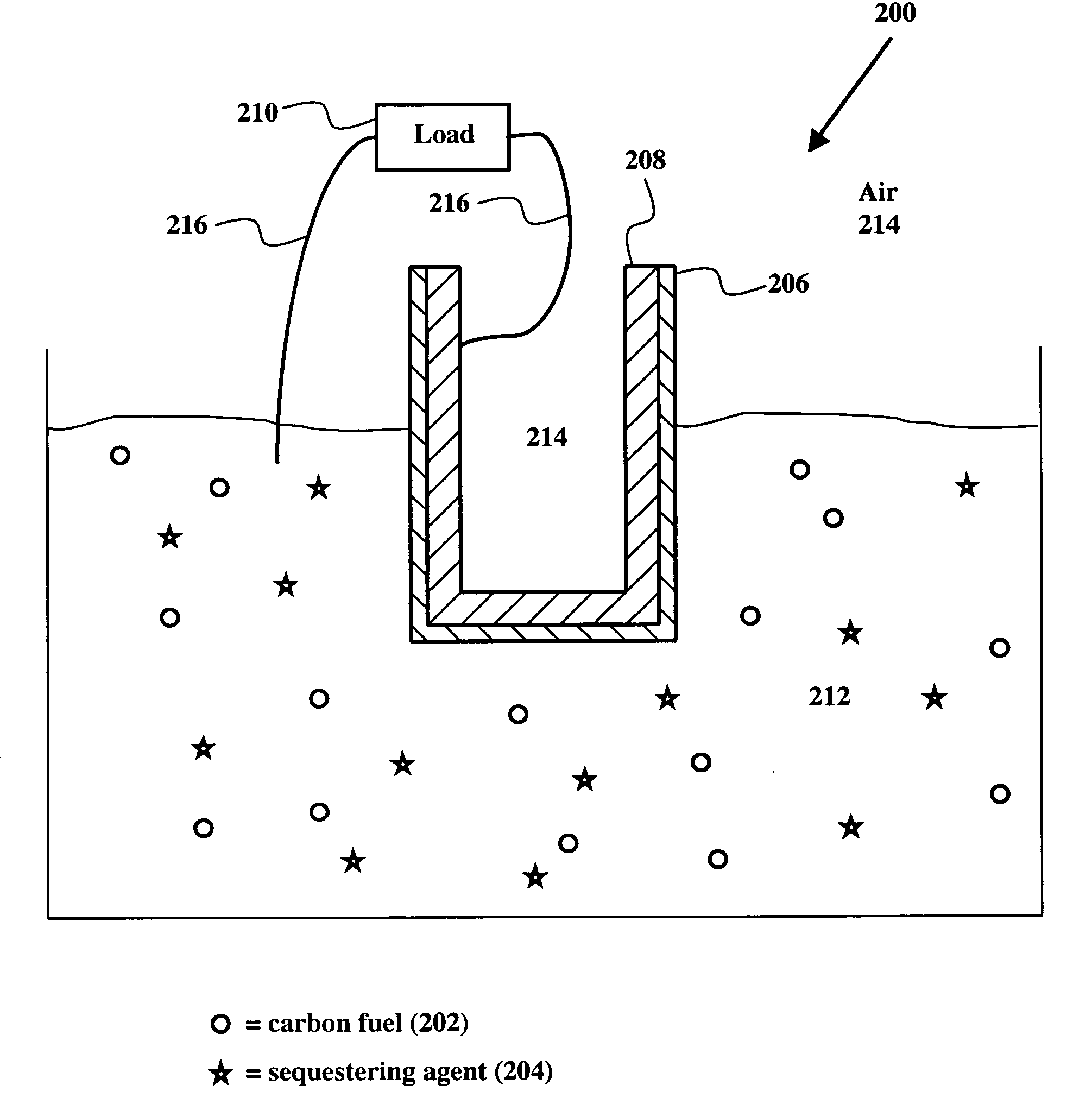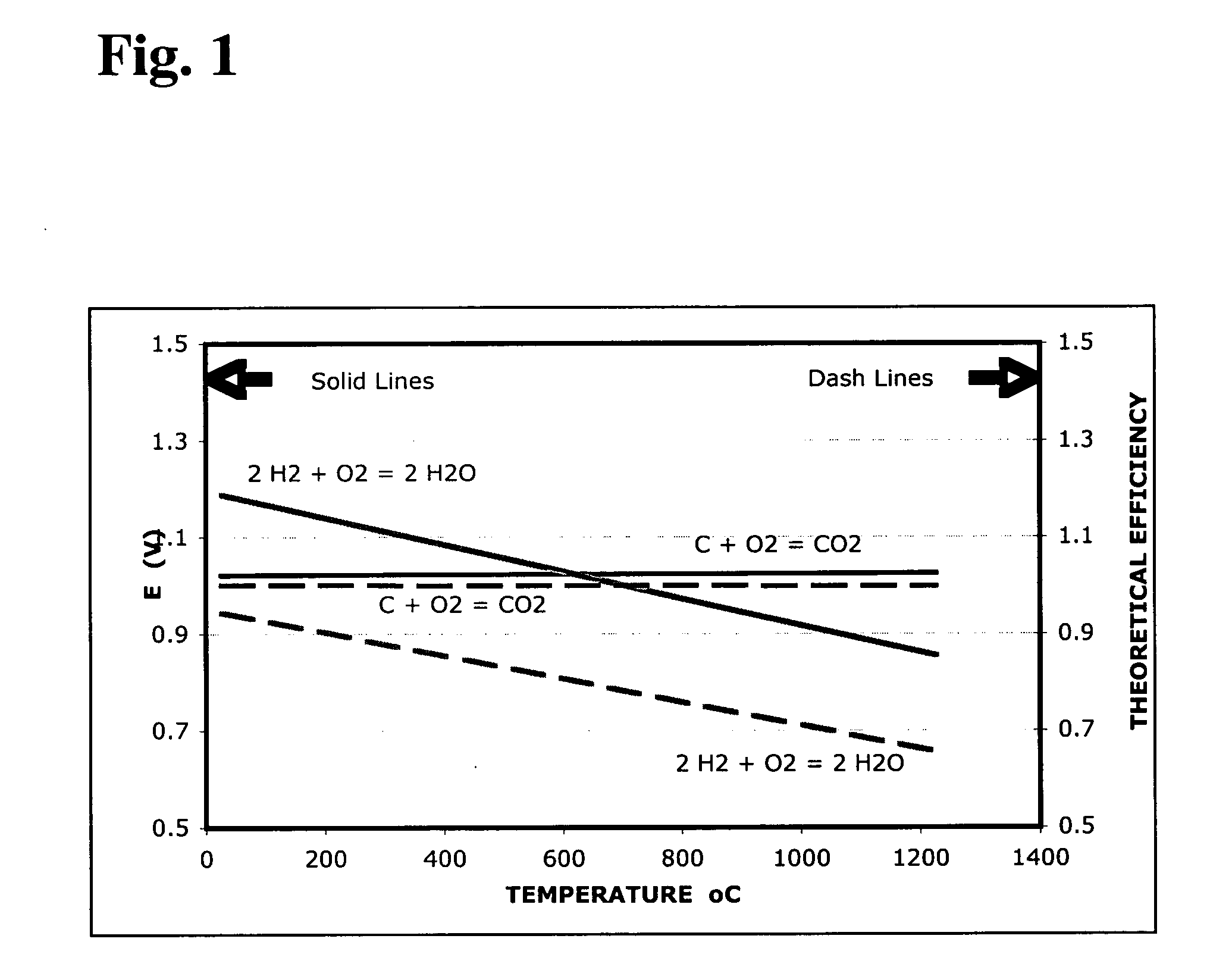Direct carbon fuel cell with molten anode
a fuel cell and carbon dioxide technology, applied in the field of fuel cells, can solve the problems of low conversion efficiency, low conversion efficiency, and production from primary sources by expensive and inefficient processes
- Summary
- Abstract
- Description
- Claims
- Application Information
AI Technical Summary
Problems solved by technology
Method used
Image
Examples
Embodiment Construction
[0027] The electrochemical conversion of carbon into electricity is achieved in a high temperature fuel cell that features an oxide ion selective solid electrolyte that supplies the oxygen required for the electrochemical oxidation of coal. Carbon fuel in all natural and synthetic forms of carbon including but not limited to coal (including anthracite, bituminous, subbituminous, and lignite coals), char, peat, coke, petroleum coke, tar sand, oil sand, charcoal, waste plastic, carbon produced by pyrolysis of carbonaceous substance, and biomass is introduced into the anode compartment of the cell as solid fuel with or without a priori physical and chemical treatment (e.g., de-ashing, washing, cleaning, and desulfurization). Furthermore, the carbon fuel is introduced into the anode compartment of the cell with or without other solid constituents, such as sequestering agents for capturing the CO2 and SO2 produced.
[0028] Referring to Eq. (1), the open circuit voltage of the fuel cell is...
PUM
| Property | Measurement | Unit |
|---|---|---|
| thickness | aaaaa | aaaaa |
| temperature | aaaaa | aaaaa |
| melting point | aaaaa | aaaaa |
Abstract
Description
Claims
Application Information
 Login to View More
Login to View More - R&D
- Intellectual Property
- Life Sciences
- Materials
- Tech Scout
- Unparalleled Data Quality
- Higher Quality Content
- 60% Fewer Hallucinations
Browse by: Latest US Patents, China's latest patents, Technical Efficacy Thesaurus, Application Domain, Technology Topic, Popular Technical Reports.
© 2025 PatSnap. All rights reserved.Legal|Privacy policy|Modern Slavery Act Transparency Statement|Sitemap|About US| Contact US: help@patsnap.com



